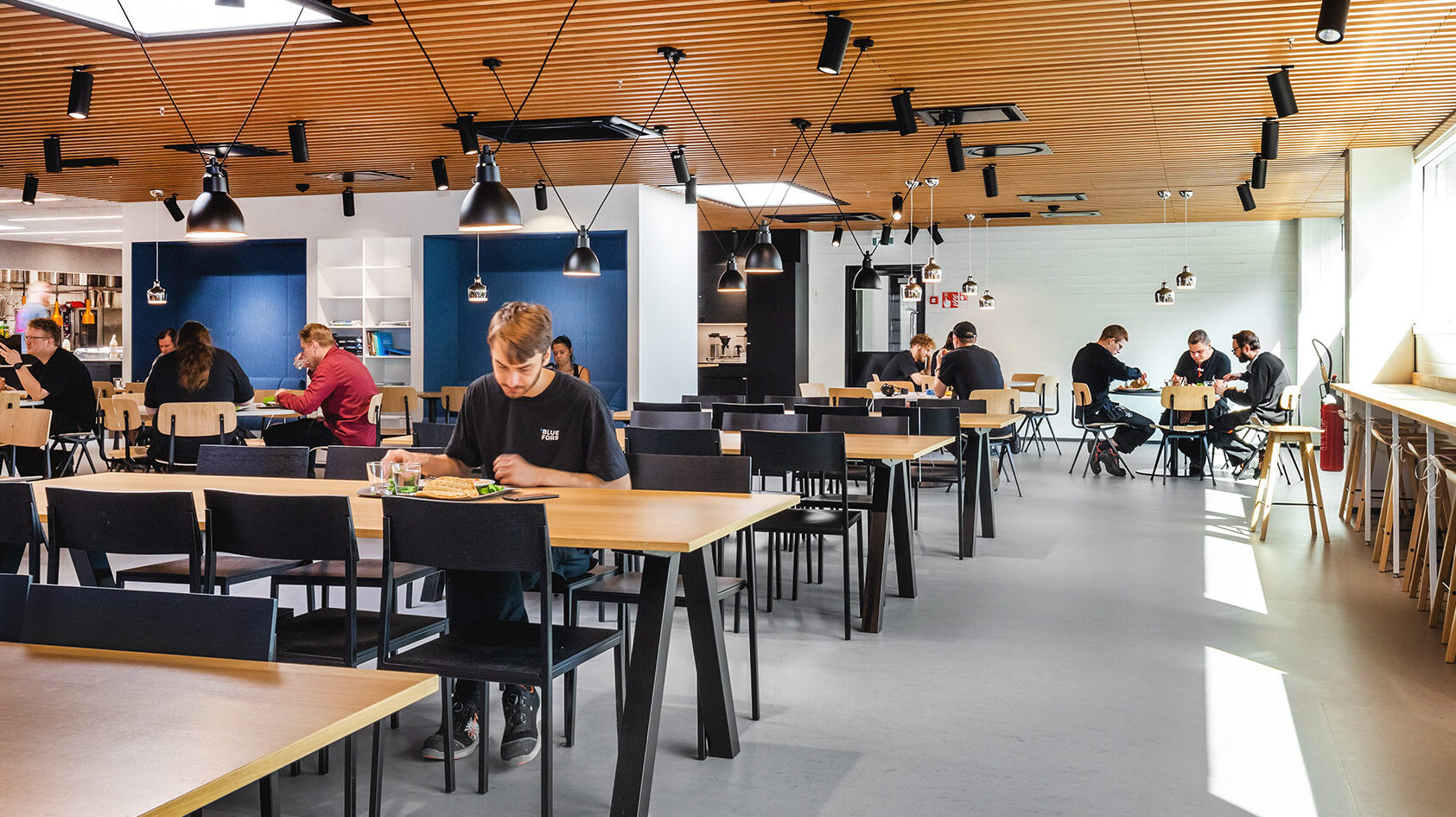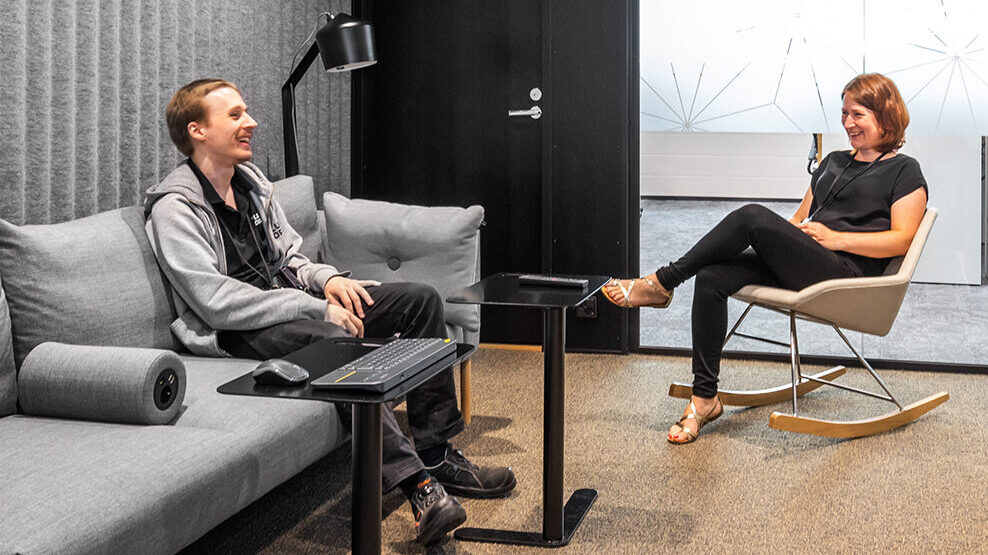Increased remote working has brought a whole new set of challenges in creating a working atmosphere and maintaining the corporate culture.
Many of us have worked in many different working environments during our careers. The job role and its meaningfulness may have varied, but there are many other factors that influence why we define a job as a “good job” and why we don’t. Of course, the experience of the workplace is not always so black and white, and there can be great successes and great failures in the workplace and the community.

A good working atmosphere is certainly something many people want in their workplace. Who wouldn’t want to come to a workplace where you can come as you are and work with good people? Unfortunately, this is not always the case and can have a significant negative impact on staff performance and mental well-being. There can be many reasons for poor team spirit, some of which can be complex or even difficult to identify.
Companies need to think of new ways to improve or maintain a sense of community even in a hybrid working model.
However, increased remote work has brought an entirely new challenge to this. An organization that used to have a really good team spirit may now suffer from limited face-to-face interaction, with the majority of meetings taking place remotely Companies now have to think of new ways to improve or maintain a sense of community in a hybrid model of working, where virtual and digital workplaces collide.
In this article, we’ve put together some tips on how to start improving your sense of community and work atmosphere. But it’s worth remembering that no change happens overnight – they take time, adaptation, and getting used to, both at the community and individual level.
Make the working café the heart of the office
The office of the future will emphasize spaces for encounters and collaboration. Social interaction has a major impact on the working atmosphere and thus on work efficiency, as poor interaction is often associated with poor internal communication, poor cooperation, and misunderstandings. While many tasks can be carried out remotely, it is necessary to consider ways of attracting employees to the office to be inspired and to meet each other occasionally – even across departmental boundaries.

A cozy and attractive working café is one effective solution. A pleasant cafeteria is not just about a coffee machine and a few seats; employees want color, greenery, and quality furniture solutions that create an experiential atmosphere. However, a functional cafeteria is a versatile space that offers a variety of ways of being in the room – whether you want to eat and/or work in a group or alone, depending on the day. For some, a café may also be the key to a more relaxed way of working – for some, the optimal working space is a café-like environment with a little buzz around it.
Organizations may also consider other incentives to include at the working café to show appreciation for employees in small ways. For example, offering fruit or breakfast porridge could appeal to many people who work long hours.
Encourage taking breaks
Unfortunately, there are workplaces where working more casually on the couch or even taking breaks is frowned upon – despite the fact that there is clearly a high work ethic in the workplace. This type of culture needs to be rooted out, as it ultimately serves no one and can cause serious problems in the longer term. Taking proper breaks should definitely be encouraged. For example, taking a short break for exercise or going out between video meetings is also highly recommended. Taking breaks has also been shown to improve performance and promote recovery..
The working atmosphere is strongly influenced by the personal values of employees. If you find yourself thinking that taking breaks is pointless or working in a café is lazy, it might be a good idea to reflect on the reasons for such thoughts and question your own daily routines – trying different ways of working can help you to see how misguided your own prejudices are. What if you tried to take regular breaks for at least a couple of weeks and try working away from your desk for at least a few hours a day? You might notice an impact on your own motivation and work efficiency, and you might see more of your colleagues when you’re in the office.
Invest in the community spirit
Various internal events and team-building days are a very effective way of fostering a good workplace spirit. Particularly in larger organizations, there can be a problem of silos and cliques that cannot be broken down by one-off large events. This can be detrimental to internal interaction. What if, instead of big events, you mix it up by bringing together people from different departments or teams around a common interest, such as trying out a new sport? Or a group of people attending a course, either remotely or in person, to develop their own skills but with plenty to talk about together while they’re at work?

The workplace culture and community spirit is allowed also to show! So why not bring these elements into the physical working environment – community mottos or inside jokes framed in text, photos and other things from over the years that are fun to reminisce about together. This can also be an eye-opener for new employees about the workplace community and a great conversation starter with new colleagues. From a hybrid perspective, these elements could also be brought into the virtual world – for example, by adding fun wallpapers to Teams meetings.
Create common guidelines
A well-functioning organisation has clear guidelines to which everyone commits. A common set of rules creates a framework for the work community that guides employees to act in accordance with the values of the organisation. Such rules and guidelines can include, for example, mutual flexibility in working hours and location.
In a hybrid model, workers should be in an equal footing regardless of location. This ensures the most efficient work, as they have control over the way they work, depending on the task at hand. However, it is essential to find the right balance between working remotely and working in the office. The relationship between the two can vary between individuals, teams and departments. Finding the right balance and establishing guidelines is therefore a major challenge for many organisations. However, it is important to encourage staff to interact face-to-face.
For the atmosphere to thrive, employees must have a general sense that there is equality in the workplace and that the diversity of individuals is seen as an asset. Employees also appreciate being listened to and being shown in practice that their opinions matter – whether it’s where to put their own coffee cup in the kitchen or a major change in the work environment. Open discussion is essential – not speaking up can lead to mistrust, frustration and a loss of motivation at work.
But it’s good to keep in mind that each of us can make a difference to the atmosphere in our own workplace. Even with the little things that aren’t explicitly asked for – like encouraging colleagues even when they fail and giving positive feedback on good work.
Want to learn more about how to build a working environment that supports a sense of community? Contact us and let's talk!
ABOUT THE AUTHOR
Sini Kuusisto
Workplace & Interior Designer at Agile Work
Sini is an Interior Architect and Furniture Designer from Lahti University of Applied Sciences where she wrote her thesis on future workplaces and how the pandemic reshaped them.
At Agile Work Sini has been working since 2020 and has been involved in various sizes and types of define and design projects.
Sini draws creativity and inspiration to her work from her curiosity and passion towards different cultures, nature and art.



